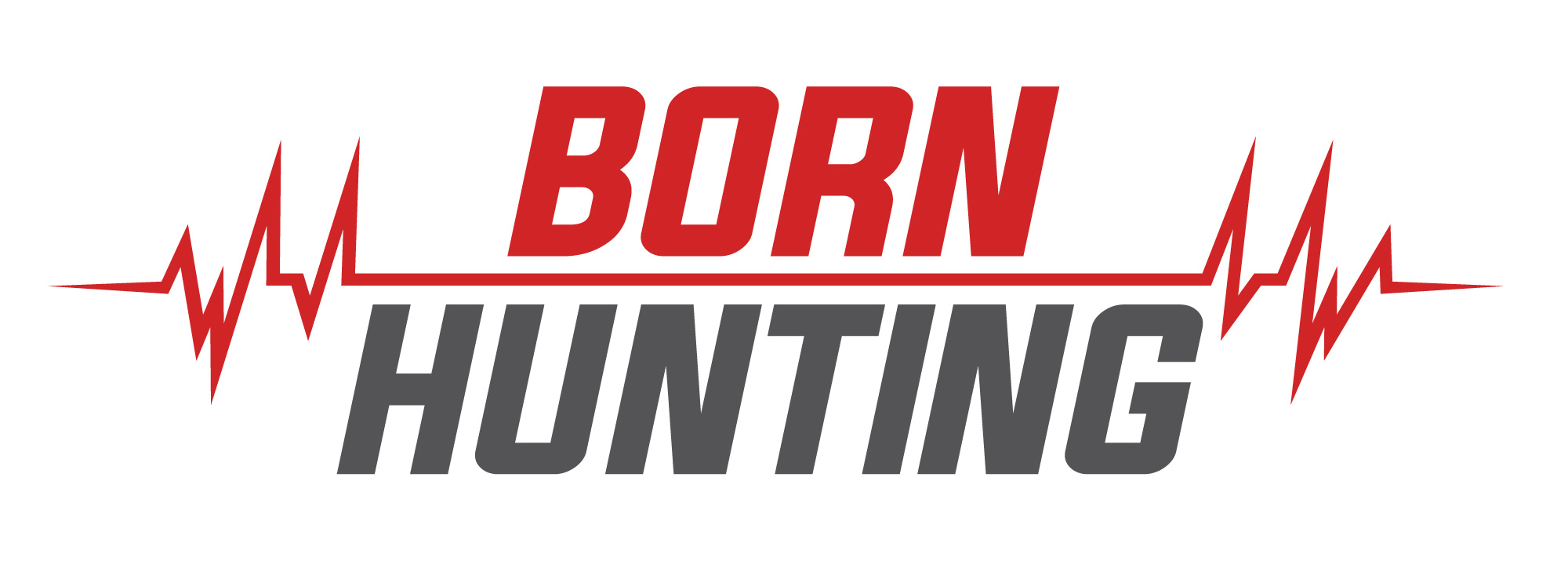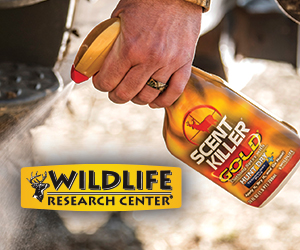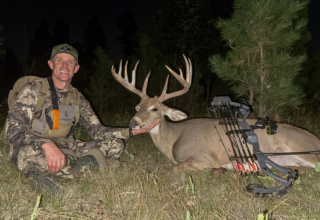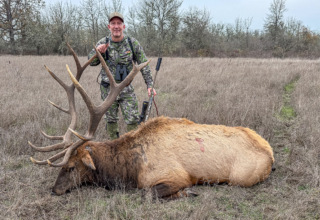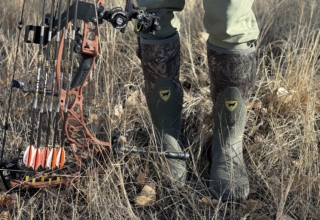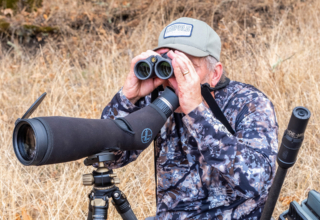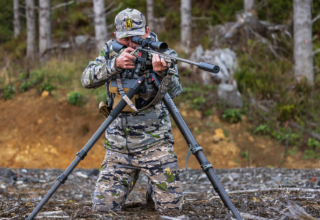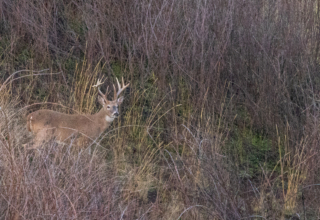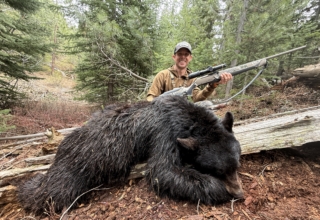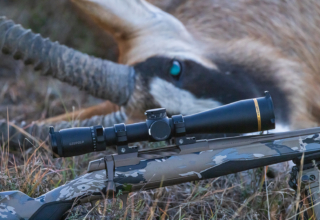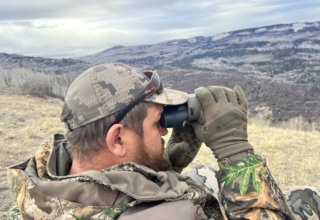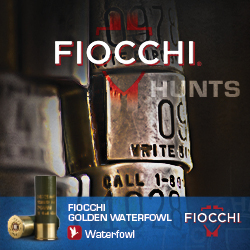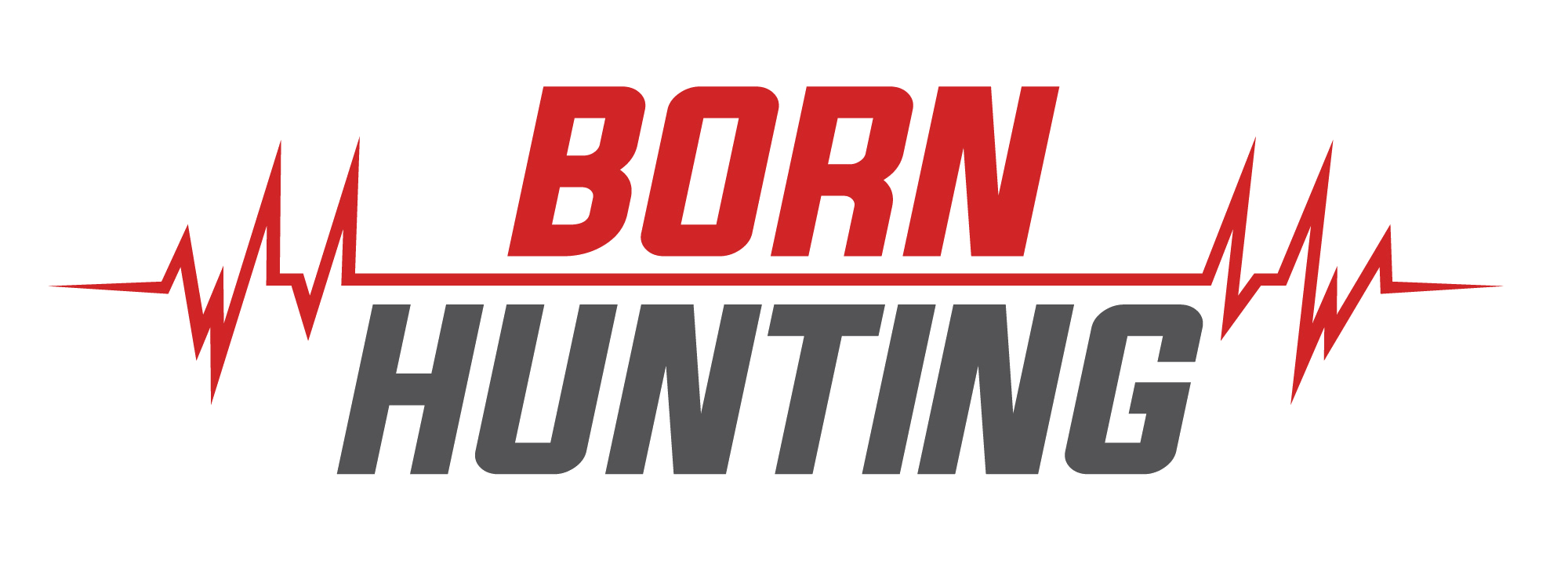Hunting big bruins, especially when spot-and-stalk is the primary hunt method, is an adventure like none other. If you want to plan a north-of-the-border bear hunt, the to-come words should motivate you to start researching big black bear locales.
by Scott Haugen
Daylight drained from the landscape as we drove down the remote logging road. My wife, Tiffany, and I had only recently arrived in camp. Rob Cork suggested we go for a quick drive. By the time we reached the end of the first spur road, we’d seen four black bears and a grizzly.
“I just want you to get a feel for the area before we start hunting it in the morning,” smiled Cork, owner of Tweedsmuir Park Outfitters in British Columbia. I love hunting big black bears. Cork’s newly acquired concession at the time encompassed some 900,000 acres and adjoined his already existing one-million acres where he targeted moose, grizzly, and mountain goats.
“This place is like an island surrounded by two giant, man-made lakes,” Cork pointed out. “Technically, it’s not an island as there is a 200-yard stretch of land connecting it to the mainland on one end, but the bear numbers here are mind-boggling.”
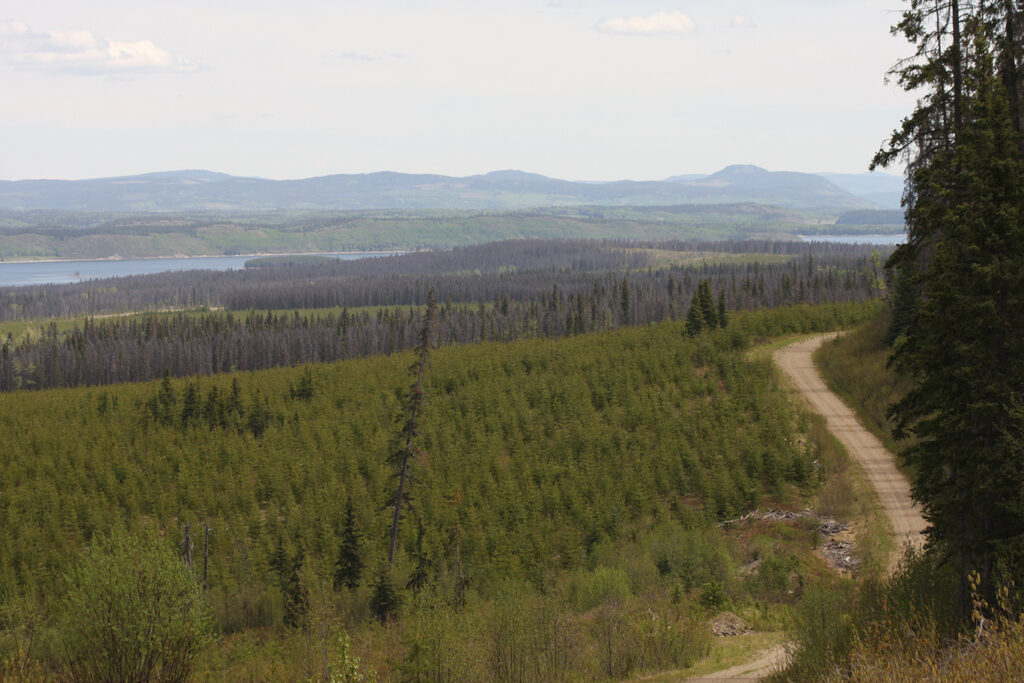
This remote ground hadn’t seen a hunter in six years, and logging operations had shut down five years ago. When you combine remote settings, plenty of food, and a series of logging roads not used in years, solid bear densities and good genetics are the only missing components of good bear hunting. With three tags to fill, Tiffany and I were excited about what was ahead.
The following day, we were on the hunt. Tiffany was up first. Though she’d seen, butchered, and cooked many bears over the years, including black, grizzly, and even polar bears from when we lived in Alaska’s Arctic, she’d never hunted bears before.
Intense winds and high grizzly numbers kept black bears on edge, and we didn’t see a single black bear until late afternoon. Our confidence levels shot up a notch when heading down a picturesque, grass-lined road.
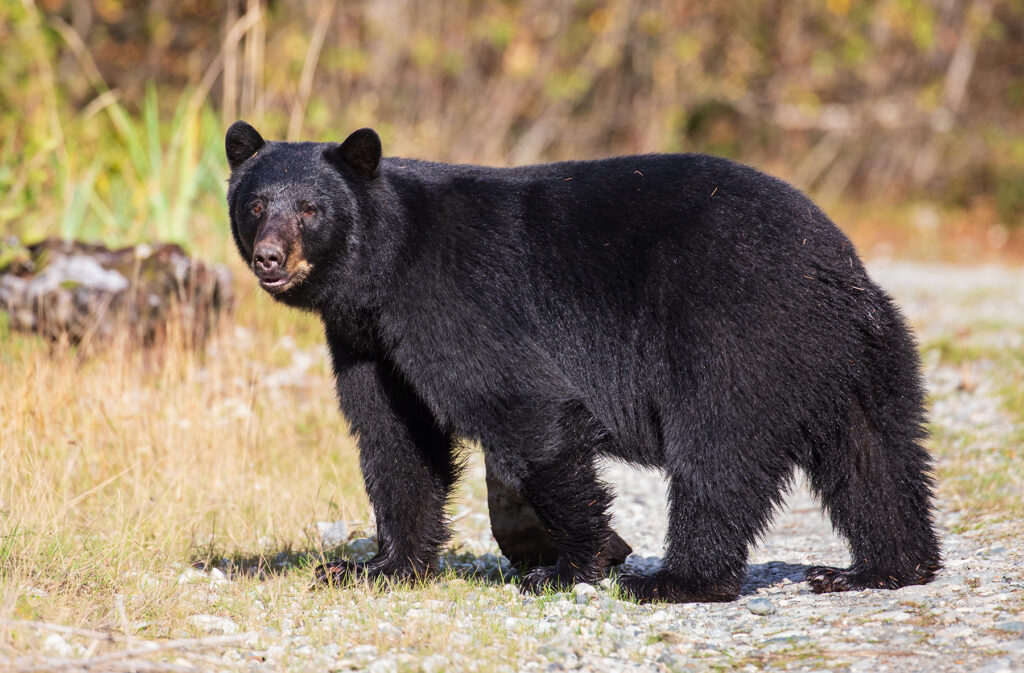
The road had been built up with gravel, leaving a six-foot-deep ditch on both sides. On this early June day, runoff from spring rains covered both sides of the road in tall, lush, freshly sprouting grass. Grass extended well off the road, growing right up to the edge of the pine forest. Bear scat was thick.
Rather than drive and risk spooking a bear, we walked along with a slight breeze in our faces. We hadn’t gone 200 yards when a small black bear darted across the overgrown road. A short distance later, another bear fed along the edge of the timber. That bruin was pushing the six-foot mark, a good bear in many places but not here.
“You can shoot that bear if you want, but we can do better,” Cork said. “It’s your call.” Tiffany looked at the bear through her scope. “It’s a nice bear, but I’m in no rush,” she confirmed.
We had yet to go 100 yards and saw another bear. This one fed exactly where you’d think, along the edge of the timber amid bright green grass. Moving closer, getting a good look at the bear through the brush and tall grass was tough. Then it dropped into the ditch, out of sight.
We hustled into the opposite ditch and headed up the road toward where the bear had disappeared. The wind had slightly picked up, masking our scent and sound. We were able to move quickly and quietly. When the bear popped up near the edge of the timber, I took a quick reading on the rangefinder. “Eighty yards, let’s set up here,” I suggested. It was a big bear, not the kind you pass, even early in the hunt.
Cork quickly had the BOG shooting sticks in position. Tiffany wasted no time getting settled. When the bear turned in our direction, a deep crease in the forehead left no doubt it was a mature boar. The front legs were thick, carrying no differentiation between the shoulder, elbow, and wrist. It was a shooter.
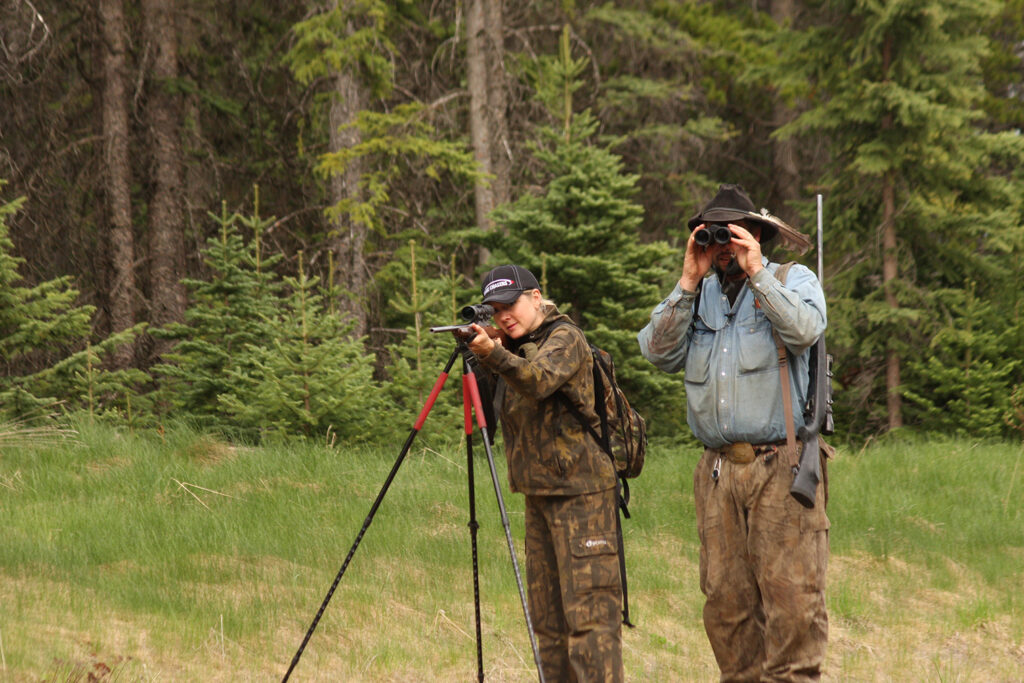
Tiffany placed the glowing reticle of the Trijicon AccuPoint on the point of the bear’s shoulder. At the shot, the .300 Winchester Magnum roared, and the 200-grain Nosler AccuBond hit the mark, dropping the bear on the spot. Tiff is a great shot. She’s hunted Africa multiple times and deer and elk near our home in Oregon.
There was no ground shrinkage, as is often the case when approaching bears. Its long, thick coat shimmered blue at certain angles. Tiffany’s bear squared 6’9″ and carried a 20 2/8″ skull. After seeing three bears on this roadside in a matter of minutes, and given how Tiffany took her first bear from it, Cork aptly nicknamed it Tiffany Boulevard.
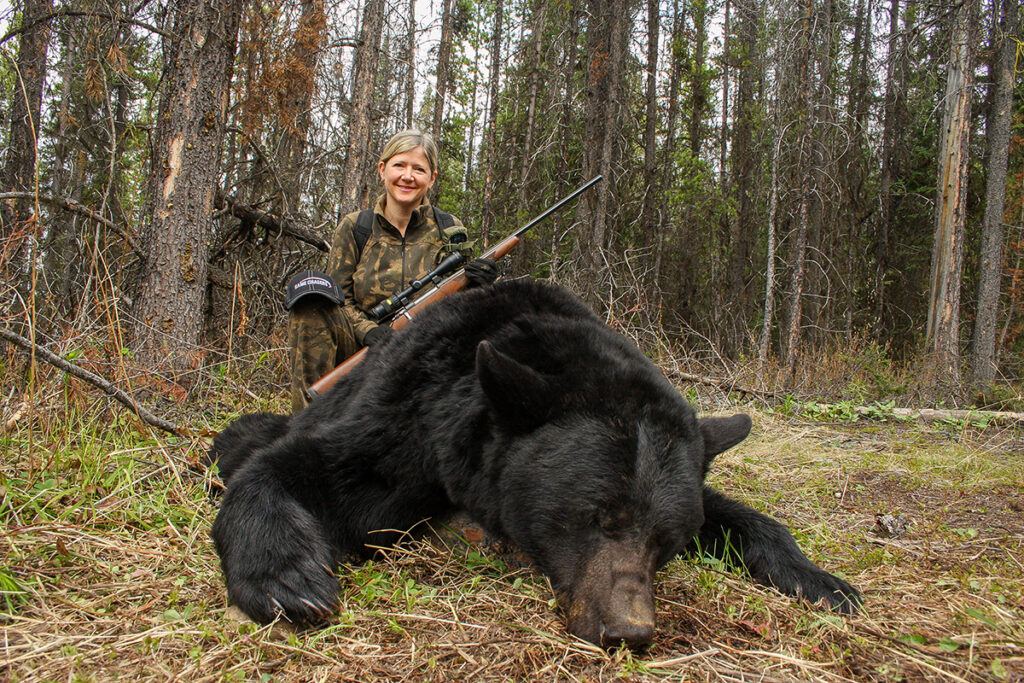
With five days left to hunt, I had two black bear tags. Two days later, I filled one tag with my Bowtech Destroyer, their latest and greatest bow at the time. I had multiple opportunities on other bears but finally drove a Gold Tip arrow through a boar as it stood on the edge of a logged unit. I’d called it in with a predator call, which was the goal. It came in slow and alert. It wasn’t the most giant bear but it was an incredible encounter. Anytime you call in a predator that can kill you, it’s exhilarating. Size doesn’t matter at times like this; it’s more about shot opportunities and judging the bear’s behavior. I had the shot, took it, and was glad I did. I’d been close to larger bears, including two over seven feet–but the shot opportunities weren’t there. Bear meat is among our favorite, and we were stockpiling a good cache.
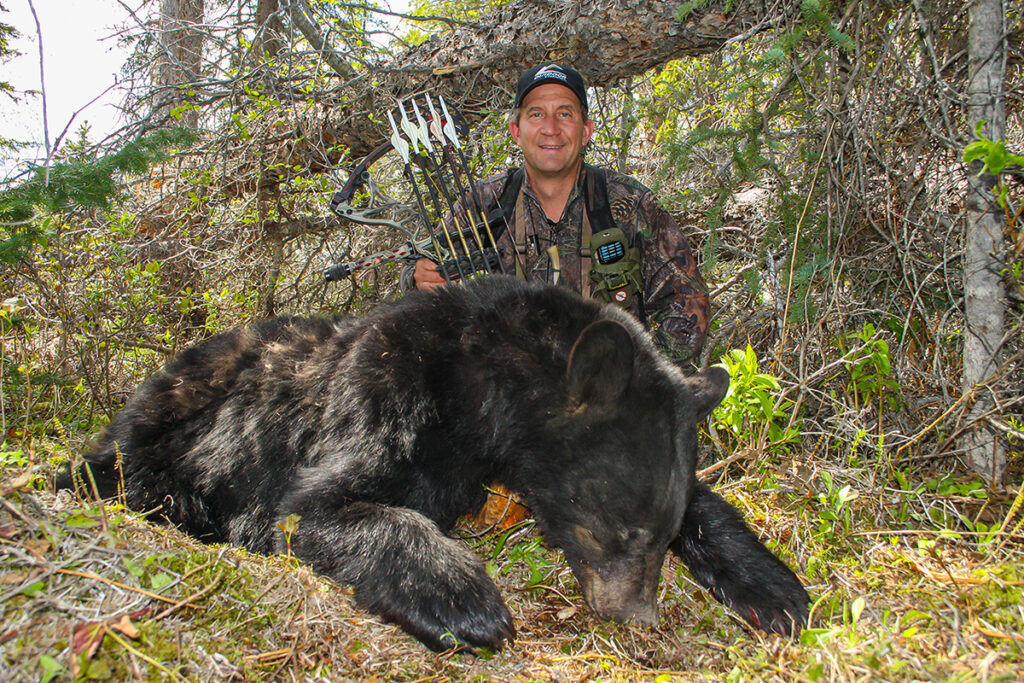
With one tag left, I set my sights on an exceptional bear. Having seen two bears that pushed the eight-foot mark that I couldn’t get within bow range of, I wanted a bear of that caliber or nothing.
By this time in the hunt, we’d seen over 30 bears, including four color phase bears. We’d also laid eyes on some beautiful grizzlies. The more I thought about it, the more my mind drifted toward wanting a color phase bear; not easy, but possible. I’d been fortunate to take some exceptional black bears over the years, but never a perfect color phase bear. That’s what we hunted for, but honestly, I wasn’t going to pass an exceptional black-coated bear should one appear.
On the second to last day, we headed to a logged unit where we’d seen a monster blond bear one evening. Before we made it, a big bear caught our eye. The bruin was feeding away, head down, at the edge of a unit. The size of its hind end left no doubt it was a whopper. When it walked, the bear’s hindquarters gyrated independently of the front half, a dead giveaway that you’re looking at a big bear.
The boar lifted its broad, blocky head and turned broadside, and the sun caught the chocolate, almost cinnamon-colored coat, leaving us speechless. When it dropped its head and commenced feeding, the stalk was on. It was a giant bear, and Cork and I knew it.
The wind was perfect, and closing the gap to 250 yards was simple. I felt solid in the shooting sticks, but when I squeezed the trigger, the bullet sailed high, hitting the dirt bank on the other side of the bear. More than any other facet of hunting, I hate missing. The big boar glanced at the point of impact, slowly rolled its ears back, and then half-heartedly faded into the timber.
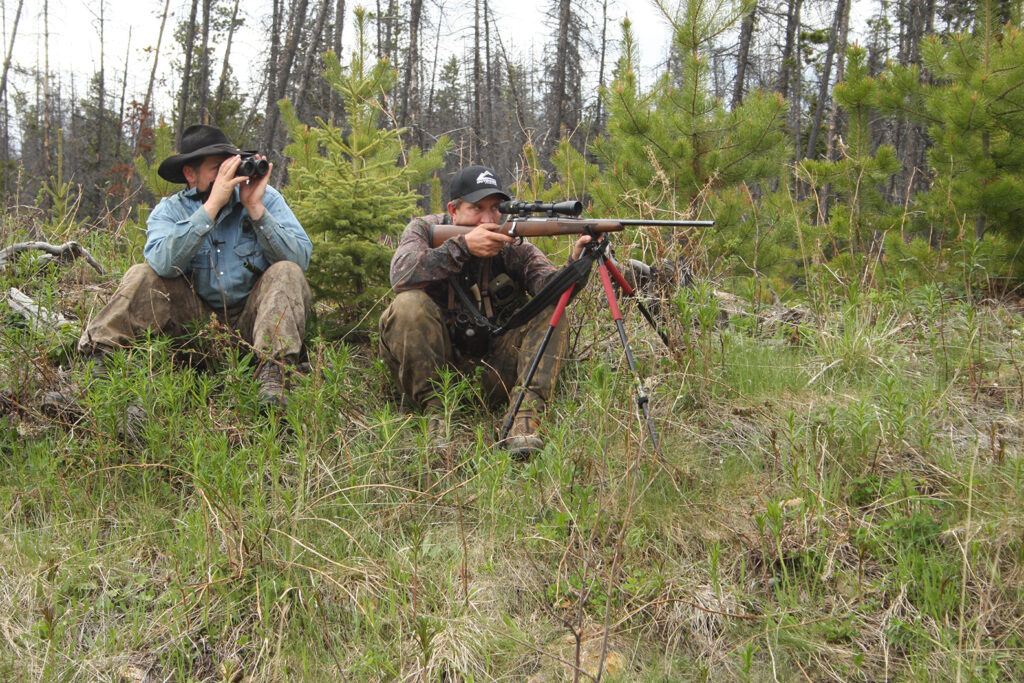
I was so sick I almost threw up. It was an exceptional bear, both in size and color. I didn’t know how, but I’d blown it. My sickness turned to frustration as my mistake sunk in. But in the back of my mind, I couldn’t help but recall the bear’s delayed reaction to the shot. It moved slowly, deliberately, not instantaneously, or overly scared.
I knew the shot missed, but I wanted to look to make sure.
“Let’s go, but move slowly,” Cork whispered. It was spooked, but not much, and it had no idea we were here. The way that bear was eating, I bet it comes right back out.” Cork’s words were uplifting and true.
We had yet to go 50 yards when the bear emerged from the trees it had stepped into. The allure of fresh greens was too much. We inched closer each time the bear buried its massive snout into tufts of clover and grass.
There was no more cover to hide our stalk, and at just over 200 yards, I felt solid in the sticks. Blocking the previous shot from my mind, I sat cross-legged, both elbows on each knee, bench-steady in the tripod. This time, the 200-grain Nosler AccuBond hammered home.
A short tracking job ensued, and when I lifted the massive head of the stunning, colorful bear, it was even bigger than I’d anticipated. Well over the seven-foot mark and carrying a skull just shy of 21 inches, the bear exuded so much character. The glowing red hide, long and thick, was mesmerizing. It was a fitting bear with which to end one of the most memorable hunts of my life.
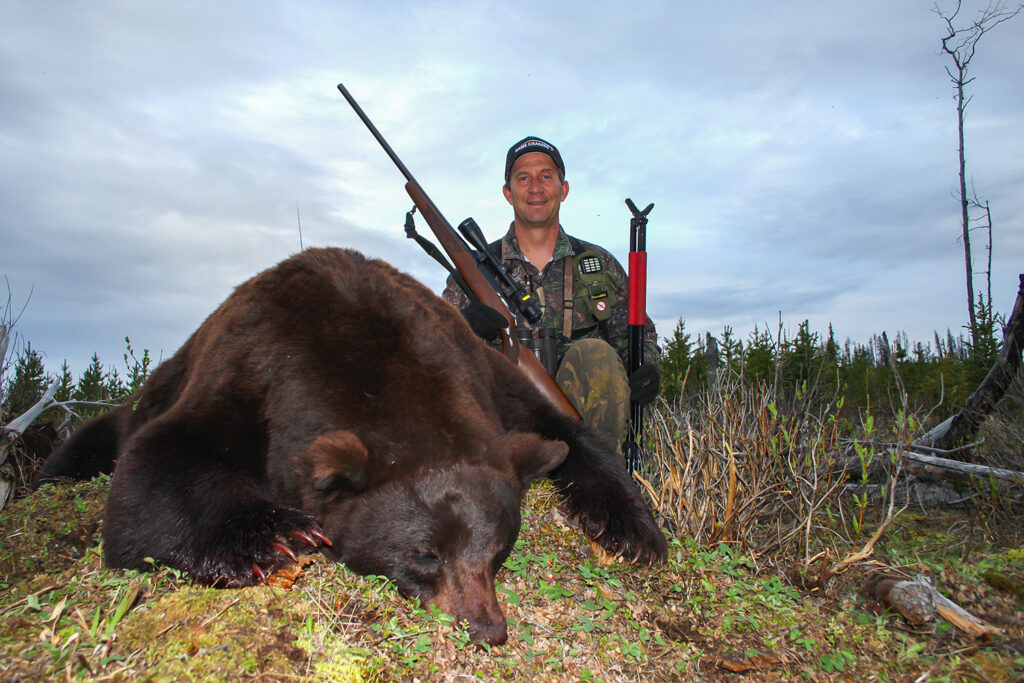
Note: Want to learn how to skin and break down a bear? Order Scott Haugen’s popular DVD, Field Dressing, Skinning & Caping Big Game, at scotthaugen.com. Follow Scott’s adventures on Instagram and Facebook.
